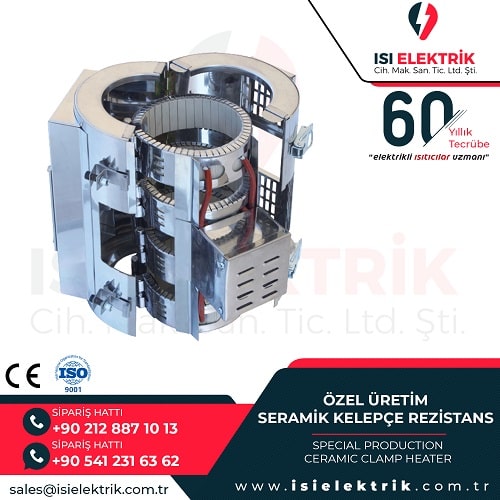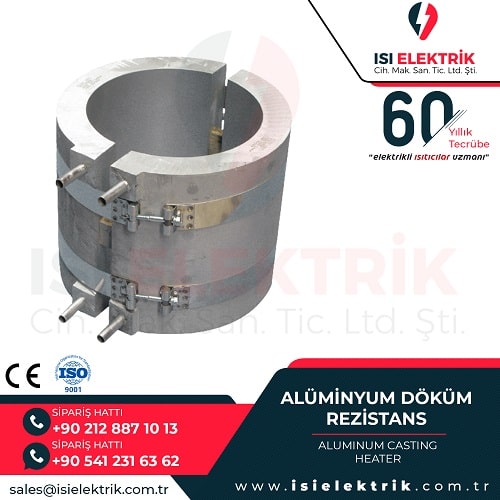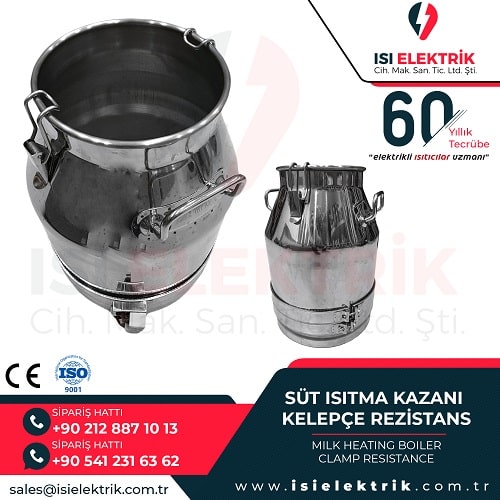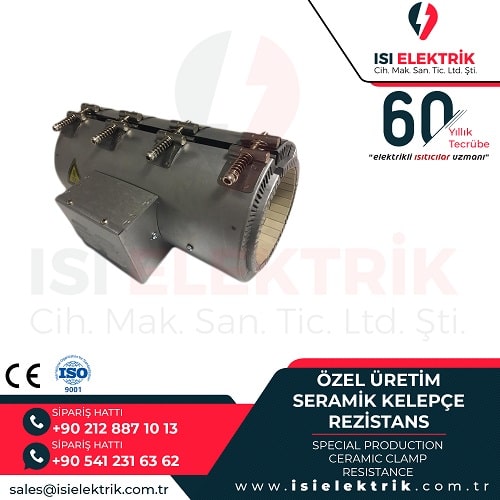Mica and Ceramic Band Heaters
Band Heaters
Band heaters are products that perform well in high-temperature
environments. These heaters can endure temperatures as high as 800 degrees.
These items can be used to solve both expansion and flexing issues. Because of
their high strength, these heaters are commonly used in heavy industry,
particularly in industrial areas.
Band heater types are manufactured in a variety of configurations based on customer requirements. It is, in general, one of the most cost-effective types of heaters. They are goods that can be integrated into a variety of work environments and systems. Band heaters attract attention due to their various types, such as ceramic and mica insulated. In conclusion, these heater types can be used with maximum performance in all devices and facilities that require high heat.
Clamp Resistance Types
Clamp resistors are produced according to their intended use and application areas. The most cost-effective types are mica-insulated resistors. These products do not function well in environments with high humidity, vapor, liquid, or moist conditions. Additionally, their resistance is lower compared to other clamp resistor types. These clamp resistors are capable of withstanding temperatures up to 300°C and are commonly used in plastic machinery, raw material shaping, and processing applications.
Ceramic Clamp Resistors: Ceramic clamp resistors, on the other hand, can withstand temperatures up to 650°C. These products have high heat resistance due to the use of steatite alloyed technical ceramics for the insulation of the resistance wire. These resistors are long-lasting and can be used for many years without requiring maintenance. They are designed for closed-loop systems and are suitable for environments that require high-temperature tolerance. Ceramic clamp resistors are ideal for industrial applications that require high heat resistance and durability.
Metal Insulated Clamp Resistors: Metal-insulated clamp resistors are designed to provide high performance even under the harshest conditions. The metal insulation increases the heat resistance, and these resistors can withstand temperatures up to 900°C. These clamp resistors are commonly used in industries that require high temperatures, such as metal processing, foundries, and high-temperature air production systems. Metal insulation enhances mechanical durability while maintaining the stability of the resistance over time, making these resistors highly durable.
Ceramic Coated Clamp Resistors: Ceramic-coated clamp resistors are especially effective in high-temperature applications. The ceramic coating evenly distributes heat, providing excellent thermal stability. These resistors help resist external environmental factors, making them more durable and long-lasting. Ceramic-coated resistors also provide electrical insulation, reducing the risk of short circuits. These types of resistors are frequently used in furnaces, industrial heating systems, and metalworking applications.
Closed-Loop Clamp Resistors: Closed-loop clamp resistors are specially designed to minimize energy loss and ensure high efficiency. These resistors are used in closed-loop systems, meaning they do not lose heat to the external environment, and all energy is efficiently transmitted. Closed-loop resistors are mostly used in laboratories, testing equipment, and systems that require high precision. These products offer energy savings while maintaining consistent high performance.
In conclusion, each clamp resistor type is optimized for specific temperature and usage requirements. Choosing the right clamp resistor type enhances efficiency, reduces operational costs, and provides long-term durability. Feel free to contact our expert team to help you select the most suitable clamp resistor for your needs.
Band Heaters Usage Areas
Band heaters have a wide range of uses. The usage areas are also different according to the type and features. Ceramic band heater models are used in extruder throat lines that shape plastic raw materials and provide melt flow. It is also preferable in small areas where a high temperature is required. These products can be used to heat externally squeezed pipelines and tanks.
Band heater models operate on a closed-circuit system. As a result, it can be used in any area where liquid flows. It can also be used in steamy or humid conditions. They are high-tech products that rarely fail. Band heaters are also used in specialized projects.
Band Heaters Technical Specifications
• Band heaters can withstand up to 800 degrees.
• It can be supported with plates produced such as
galvanized and aluminized steel.
• They are designed to be resistant against stretching
and expansion problems.
• On the outside of these products, insulating materials
such as ceramic and micanite are used as a protective layer.
• They are resistant to situations such as breakage,
scattering, and fragmentation.
• They are produced with different band lock assemblies,
connection boxes.
• They can be produced in different shapes according to
your needs as screw, terminal, plug, and cable output.
•It is available in various powers ranging from 200 W to 1300 W. Furthermore, they are products that can be manufactured with higher Watt power to meet your specific needs.
Band heater types are long-lasting materials that are always produced specifically for your orders. They can work at a high standard even if they are not maintained for a long time.
Band Heater Prices
The cost of a band heater varies depending on the product features required. We make special products for your needs based on how these products are used. We manufacture band heaters to meet your specific budget and requirements. You can produce according to all usage areas.
Ceramic and insulation materials are used as protective plates on the outer surfaces. Because of this protective feature, these materials cannot be fragmented, disintegrated, or broken. They are products that meet all your requirements, as they include electrical connection, connection box, and band lock components.
What Are the Technical Specifications of Clamp Heaters?
- Power: Can vary between 200 Watts and 1300 Watts.
- Voltage: 110 Volts - 240 Volts
- Temperature Range: 0°C - 800°C
- Body Material: Aluminum-coated steel or galvanized steel
- Heating Element Material: Nickel-chromium alloy or stainless steel
- Insulation Material: Mica-based material or ceramic
- Size: Can be adapted to the size and shape of the environment to be heated.
- Connection Type: Clamp connection, cable terminals, or plug assembly
Other Technical Features
- Heating Performance: The heating performance of clamp resistors is directly related to energy efficiency. High-quality resistors provide maximum heating with minimal energy. This feature not only ensures energy savings but also allows the system to heat up quickly and efficiently. Heating performance also helps maintain stable and reliable results during the process by providing precise temperature control.
- Cooling Rate: The cooling rate of clamp resistors is as important as the heating time. The cooling rate is a critical parameter for the efficient operation of the system. A fast cooling ability ensures that the equipment can cool down safely and quickly, especially in industrial applications working with high temperatures. This allows the system to be more durable and operate safely.
- Heat Distribution: Heat distribution refers to how evenly the heat generated by the resistor is spread across the entire surface. Good heat distribution prevents overheating in specific areas and reduces energy loss. This is particularly important for industrial processes where managing high temperatures is necessary. Even heat distribution ensures more efficient operation and contributes to a longer lifespan of the device.
- Longevity: The longevity of clamp resistors is a significant advantage in terms of reducing maintenance costs and ensuring continuous operation. Resistors made from high-quality materials are resistant to extreme temperatures and mechanical stress, ensuring long-term high performance. Longevity reduces operational costs and ensures the device continues to operate efficiently over time.
- Protection Class: The protection class of clamp resistors determines their resistance to external factors. Resistors with a high protection class are more resistant to moisture, dust, and outdoor elements. This is especially important in harsh working conditions and outdoor applications. A higher protection class also enhances the safety of the device, helping prevent faults and unwanted situations.
- Mounting Method: The mounting method of clamp resistors directly affects the efficiency and ease of use of the system. Quick and easy installation processes save time and reduce the risk of errors during setup. The mounting method can also be customized to fit different types of installations, offering flexibility based on the intended use. This feature ensures that the system operates more efficiently and is easier to maintain.
What Are the Advantages of Clamp Heaters?
- Easy installation: Clamp heaters are easy to install and use.
- Fast heating: Clamp heaters have a rapid heating feature.
- Even heat distribution: Clamp heaters distribute heat evenly.
- Durability: Clamp heaters have a sturdy and durable structure.
- Long lifespan: Clamp heaters are long-lasting devices.
- Efficiency: Clamp heaters use energy efficiently.
- Safety: Clamp heaters can be used safely.
- Versatility: Clamp heaters are available in different power, voltage, temperature range, and sizes.
- Wide range of applications: Clamp heaters can be used in many different fields.
- Economical: Clamp heaters are more economical compared to other heating elements.
Materials Used in Clamp Heater Production
- Insulation Materials:
- Mineral wool: Provides insulation and reduces heat loss.
- Silicone rubber: Provides flexibility and has sealing properties.
- Connection Elements:
- Stainless steel bolts: Provides strong connections and is resistant to corrosion.
- Copper or aluminum clamps: Reinforces electrical connections.
- Cable Materials:
- Heat-resistant cables: Resistant to high temperatures and ensures safe electrical conduction.
- Silicone-coated cables: Provides flexibility and high temperature resistance.
- Protective Coatings:
- Polyester powder coating: Provides an aesthetic appearance and forms a protective layer.
- Polyurethane varnish: Provides extra protection and is resistant to chemicals.
- Heat Distribution Plates: Some clamp heaters have specially designed metal plates to distribute heat evenly.
Technical Details to Consider When Choosing Clamp Heaters
- Protection and Safety Features: Check for protection features such as automatic shutdown in case of overheating when selecting a clamp heater. Also, it's important to ensure safety features against overcurrent and short circuits.
- Compliance and Standards: Verify that the chosen clamp heater complies with national and international standards. This is crucial for the safety and performance of the product.
- Usage Area and Environmental Conditions: Consider the characteristics of the environment where the clamp heater will be used. If it will be exposed to chemical substances, moist, or dusty environments, select appropriate materials.
- Uniform Heating: The installation and distribution of the clamp heater should ensure that the surface to be heated warms up homogeneously. Uniform heat distribution helps in proper processes and enhances product quality.
- Continuity and Maintenance Ease: The selected clamp heater should be suitable for long-term and continuous use. Additionally, ease of maintenance and cleaning processes is an important factor.
Clamp Resistor Features for High Heat Efficiency
Clamp resistors are specially designed devices to provide high heat efficiency in industrial heating applications. These resistors manage temperature increases rapidly while providing maximum heating with minimal energy. Here are some features of clamp resistors that contribute to their high heat efficiency:
- High Heat Conductivity: Clamp resistors are made from high-quality conductive materials, allowing heat to be transferred quickly and effectively. Conductors such as copper, nickel, and kanthal provide high heat conductivity, enabling the heat to spread quickly and reach the desired temperature levels.
- Heat Distribution: Good heat distribution ensures that heat is spread evenly across the surface, minimizing temperature differences and preventing overheating. This feature allows the heating system to operate more efficiently and reduces energy loss. Heat distribution also improves the system's stability and contributes to longer device life.
- Rapid Heating and Cooling: Clamp resistors feature rapid heating and cooling capabilities. This is a significant advantage, especially in industrial applications that require high temperatures. The ability to quickly reach the desired temperature and then cool down quickly saves energy and increases system efficiency.
- Heat-Resistant Insulation Materials: Clamp resistors use heat-resistant insulation materials that prevent heat loss and reduce heat wastage. Materials like ceramics, silicone, and fiberglass insulate the heat, allowing the device to operate efficiently. These materials prevent heat from escaping, ensuring the system runs at high efficiency.
- Closed-Loop System: Clamp resistors that use a closed-loop system minimize heat loss. Closed-loop systems keep heat within the internal environment, preventing energy from dissipating externally. This enhances energy efficiency and ensures that temperature control remains precise and stable.
- Long-Term Durability: The high heat resistance of clamp resistors allows them to perform well over long periods of use. Heat efficiency is not just important in the short term; it also remains effective over time. Long-lasting clamp resistors provide energy efficiency with minimal maintenance, reducing long-term operational costs.
Clamp resistors enhance efficiency and provide energy savings in industrial heating applications thanks to their high heat efficiency features. Proper material selection, heating performance, and correct installation ensure that these resistors reduce energy costs while providing reliable long-term performance.
Clamp Resistor Technical Details
Clamp resistors are high-performance devices specifically designed for heating applications in industrial settings. These resistors offer high efficiency and can operate safely across a wide temperature range due to various technical details. Below are the key technical details of clamp resistors:
- Conductor Material: Clamp resistors are typically made from conductive materials like copper, nickel, and kanthal. These materials offer excellent heat resistance and electrical conductivity. A good conductor ensures that the resistor operates more efficiently, generating high heat with minimal energy loss.
- Insulation Material: High-temperature resistant insulation materials are used in clamp resistors to minimize heat loss. These materials include silicone, ceramics, fiberglass, and steatite alloys. They ensure that the resistor operates efficiently while being protected from external temperature influences.
- Operating Temperature Range: Clamp resistors typically operate within a temperature range from 300°C to 1300°C. This broad temperature range makes them suitable for various industrial applications. Each type of clamp resistor can be customized to suit specific temperature conditions.
- Installation and Setup: Clamp resistors allow for quick and easy installation. They are usually mounted directly onto metal surfaces or pipes using a clamp, ensuring the heating element is correctly positioned. This simple installation process saves time, particularly in large industrial systems.
- Energy Efficiency: The energy efficiency of clamp resistors is high due to the use of high-quality conductive materials and insulation features. Low energy loss enables more efficient operation, reducing operational costs. Additionally, these resistors allow heat to be quickly distributed, contributing to energy savings.
- Durability and Lifespan: Clamp resistors are highly durable, resistant to high temperatures, mechanical pressure, and environmental factors. Made from premium materials, these resistors have a long lifespan and require minimal maintenance while providing consistent performance. This durability is especially valuable in continuously operating industrial systems.
- Protection Class: The outer casing of clamp resistors is designed with a high protection class to safeguard against external elements. Models with protection classes like IP65 are dust and water-resistant, making them suitable for challenging working conditions. This feature ensures the device's long lifespan and safe operation.
Clamp resistors are devices that offer high performance and durability, making them widely used in industrial heating applications. These technical details ensure that the resistors operate efficiently, safely, and have a long lifespan, thus contributing to the optimization of industrial processes.
Energy Saving with Clamp Resistors
Clamp resistors play a significant role in energy efficiency, especially in industrial heating applications. These devices are designed to deliver high heating performance while minimizing energy consumption. Below are some of the key features of clamp resistors that contribute to energy savings:
- Efficient Heat Distribution: Clamp resistors are designed to evenly distribute heat across the surface. This uniform heat distribution ensures that energy is used effectively, reducing waste. By maintaining a consistent temperature across the heating element, clamp resistors minimize energy consumption and enhance overall system efficiency.
- High Thermal Conductivity: Materials like copper, nickel, and kanthal used in clamp resistors provide excellent thermal conductivity. This high thermal conductivity allows the resistor to heat up quickly, reducing the time needed to reach the desired temperature. Faster heating times save energy by minimizing the electricity required to reach optimal performance levels.
- Low Energy Loss: Clamp resistors are built with high-quality insulation materials that reduce energy loss. Insulation materials such as ceramics, silicone, and fiberglass ensure that heat is retained more effectively, preventing it from escaping into the environment. This minimizes energy wastage and ensures that the energy provided is efficiently used for heating purposes.
- Rapid Heating and Cooling: Clamp resistors feature fast heating and cooling capabilities. They can reach the desired temperature in a short period and cool down just as quickly once the heating process is complete. This reduces energy consumption by avoiding prolonged unnecessary heating, making the system more efficient and cost-effective.
- Precise Temperature Control: Clamp resistors allow for precise temperature control in heating applications. Accurate temperature regulation ensures that energy is only used when needed, preventing overuse and reducing operational costs. This level of control ensures that energy is applied efficiently and only when required, contributing to significant energy savings over time.
- Long-Term Durability: Clamp resistors are designed to last for extended periods without requiring frequent maintenance or replacement. This long lifespan ensures that the system operates efficiently over time, reducing the need for energy-intensive repairs or replacements. By maintaining consistent performance over the long term, clamp resistors contribute to overall energy savings and reduce long-term operational costs.
In summary, clamp resistors are essential components for achieving energy savings in industrial heating systems. Their efficient heat distribution, high thermal conductivity, low energy loss, and rapid heating features make them an excellent choice for reducing energy consumption and improving overall system efficiency. By optimizing energy use, clamp resistors help to lower operational costs and reduce the environmental impact of heating processes.
Key Technical Details to Consider When Selecting Clamp Resistors
When selecting clamp resistors for industrial heating applications, it is essential to consider several key technical factors to ensure optimal performance, safety, and energy efficiency. Below are the main technical details that should be taken into account when choosing clamp resistors:
- Operating Temperature Range: One of the most critical factors when selecting a clamp resistor is its operating temperature range. Clamp resistors are designed to perform effectively at high temperatures, with some models capable of withstanding temperatures between 300°C and 1300°C. It is important to choose a resistor that can handle the specific temperature conditions of your application without the risk of failure.
- Material Selection: The materials used in the construction of the clamp resistor have a significant impact on its performance. The conductor material, such as copper, kanthal, or nickel, determines the heat resistance and conductivity of the resistor. The insulation material, such as silicone, ceramic, or fiberglass, influences the thermal insulation and overall durability of the resistor. Selecting the right materials is crucial for enhancing performance.
- Resistance Value: The resistance value of clamp resistors should match the requirements of the application. High-resistance resistors produce more heat, while low-resistance resistors generate less heat. Therefore, choosing the correct resistance value according to the system's needs is a critical factor for both energy efficiency and performance.
- Energy Efficiency: Energy efficiency in clamp resistors is crucial to minimize energy loss during the heating process. Choosing a resistor with low energy loss and fast heating and cooling capabilities reduces operational costs and environmental impact. Opting for high-efficiency models ensures long-term energy savings.
- Ease of Installation and Mounting: The ease of installation and mounting of clamp resistors is another important consideration. Models that are easy to install and require minimal maintenance contribute to operational efficiency. The choice of mounting method should be suitable for the application and ensure long-term reliability.
- Durability and Longevity: The durability of clamp resistors is crucial for long-term performance. Resistors made from durable materials can withstand high temperatures and provide reliable operation over extended periods. Long-lasting resistors reduce maintenance needs and lower operational costs.
Considering the right technical details when selecting a clamp resistor ensures that the system operates efficiently and safely. By taking into account factors such as the temperature range, material selection, resistance value, and energy efficiency, you can select the most suitable resistor for your application.
Clamp Resistor Working Principle
Clamp resistors operate by converting electrical energy into heat. The working principle of clamp resistors is based on the heating effect that occurs when an electric current passes through a resistive material. Below are the key principles behind their operation:
- Electrical Resistance: When electric current flows through a resistive material, the atoms in the material impede the movement of electrons. This resistance to electron flow generates heat, which is the primary function of a resistor. The higher the resistance, the more heat is produced for a given current. Clamp resistors are made using materials with high resistance to electrical flow, such as copper, kanthal, or nickel, to efficiently generate heat.
- Thermal Conductivity: The efficiency of clamp resistors depends on the thermal conductivity of the material, which refers to how well the material can transfer heat. Materials like ceramics and metals help distribute heat rapidly across the surface of the resistor, ensuring uniform heating and preventing overheating. This allows the resistor to function at high temperatures without degrading or failing.
- Heating and Cooling Cycle: Clamp resistors are designed to heat up quickly when electrical current is applied. The amount of heat generated is directly proportional to the current passing through the resistor. Once the current is turned off, the resistor cools down quickly due to its efficient thermal conductivity and heat distribution properties. Fast heating and cooling cycles improve energy efficiency and the responsiveness of the heating system.
- Surface Area: The surface area of the clamp resistor plays a critical role in heat distribution and overall performance. A larger surface area allows for better heat dissipation, reducing the risk of overheating. The surface area is designed to be in direct contact with the component or material being heated, ensuring efficient thermal transfer.
- Insulation and Durability: To ensure that the heat generated by the clamp resistor is safely contained and effectively used, insulation materials like silicone, fiberglass, or ceramic coatings are applied. These materials provide thermal insulation, prevent short circuits, and protect the resistor from external factors such as moisture or chemicals, ensuring long-lasting durability and reliable performance over time.
- Controlled Heat Output: The heat output of a clamp resistor is carefully controlled by adjusting the current passing through it. The resistor's resistance value, along with the applied voltage, determines the amount of heat produced. Proper design ensures that the resistor can maintain a stable temperature, which is crucial for applications requiring precise temperature control.
The working principle of clamp resistors is based on converting electrical energy into heat through the resistance offered by the material. The combination of high resistance, good thermal conductivity, and efficient heat distribution allows clamp resistors to operate at high temperatures while maintaining their performance and durability. This makes them ideal for industrial heating applications that require precise temperature control and reliability.
Call us now and we will give you detailed information for all your band heater needs.
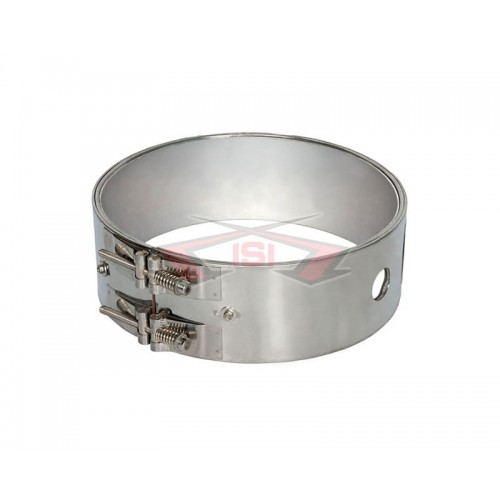
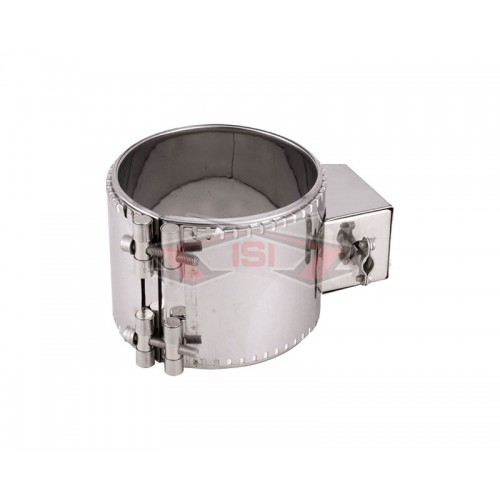
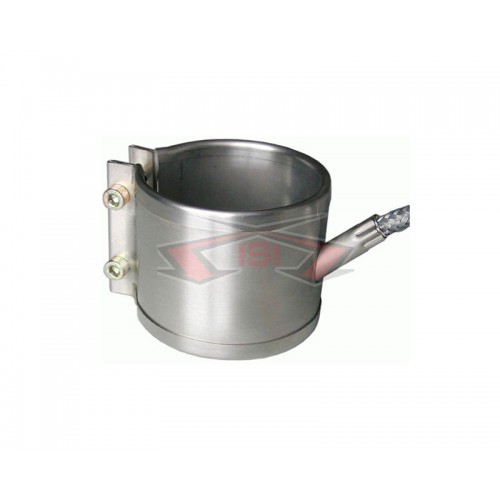
-min-500x500w.jpg)
-min-500x500w.jpg)
-min-500x500w.jpg)
-min-500x500w.jpg)
-min-500x500w.jpg)
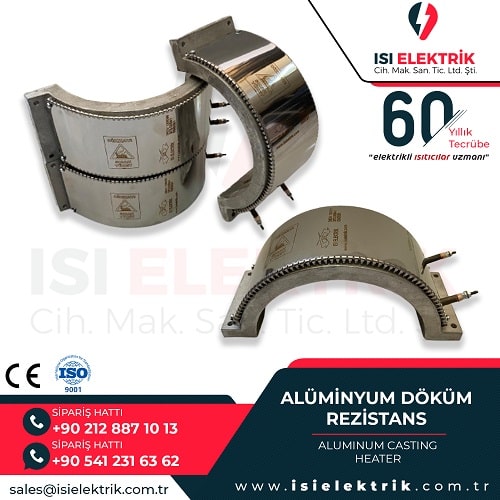
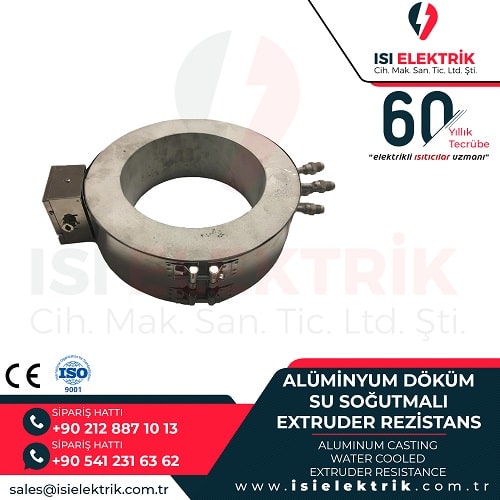

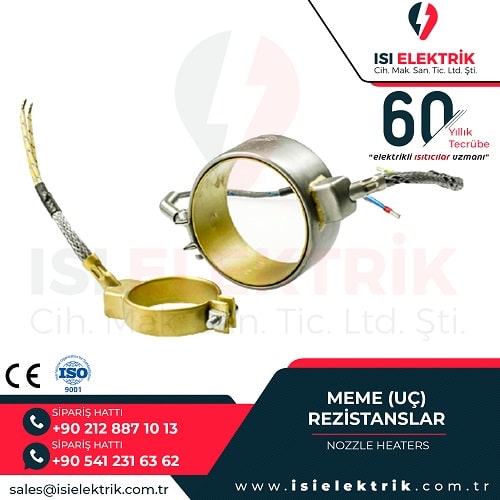
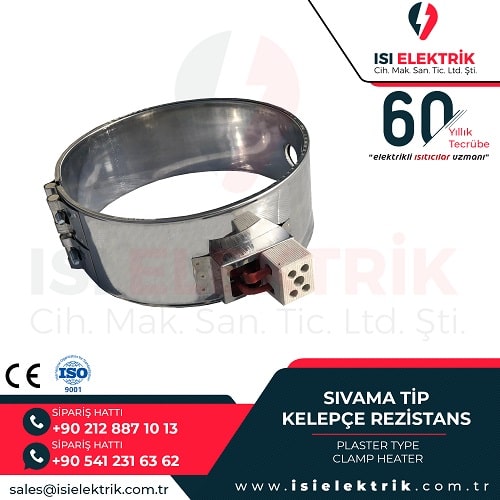
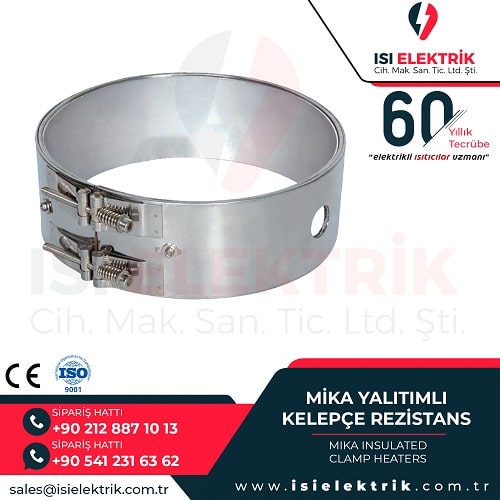
-min-500x500.jpg)
-min-500x500.jpg)
